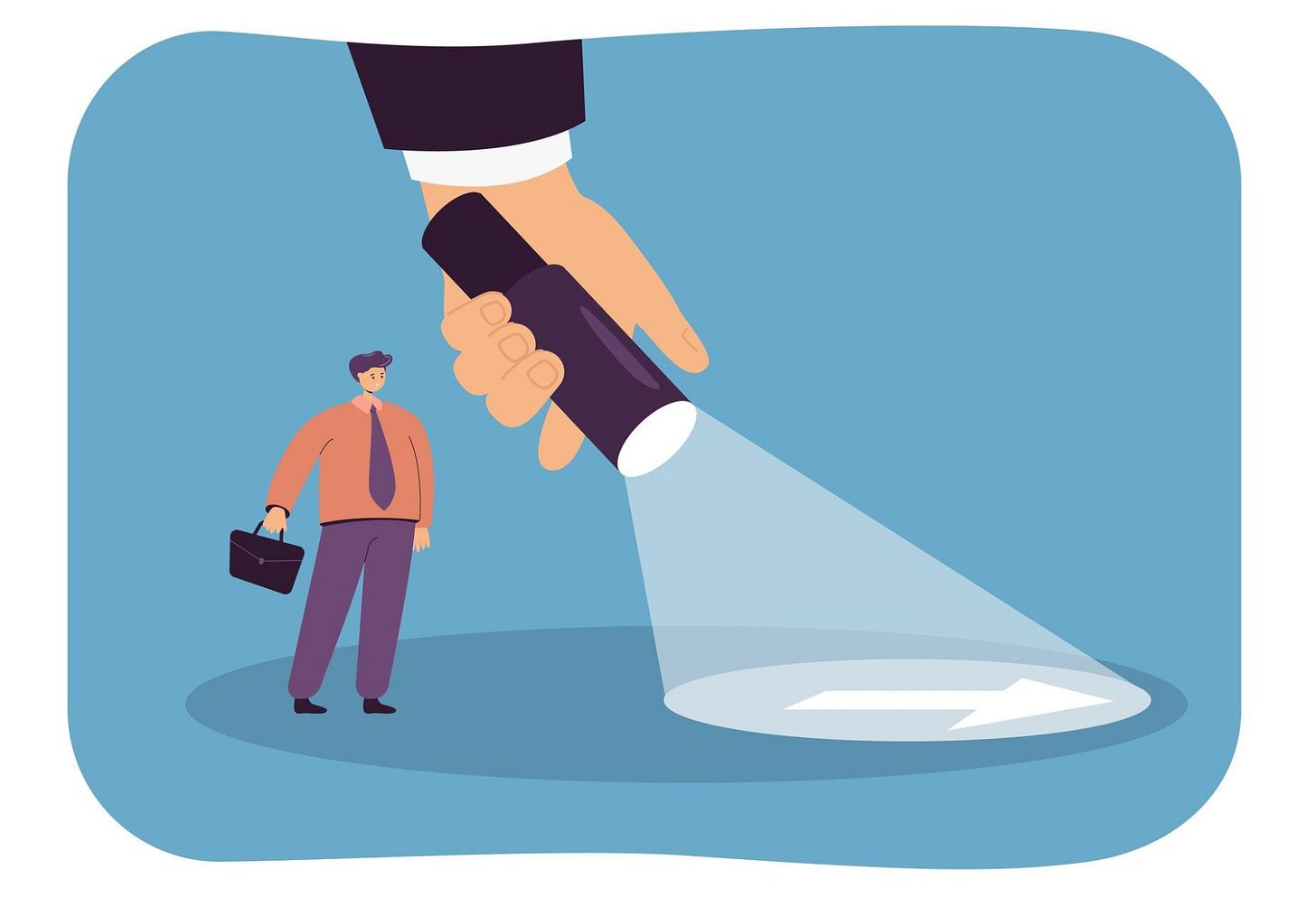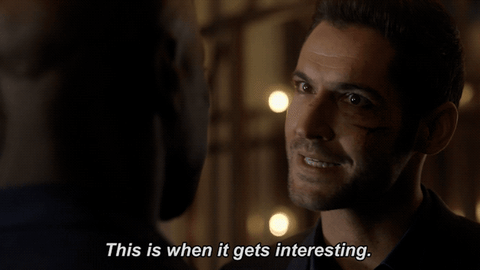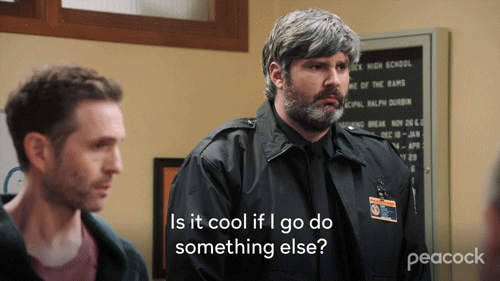A Glimpse into the Product Career Path
Let’s start with the obvious: yes, there is a “standard” career ladder for product managers. Most companies (especially in big tech) structure it like this: Associate PM → PM → Senior/Lead PM → Director of Product → VP/ CPO.
It’s a clean, logical sequence and while it can serve as a helpful north star, it doesn’t always reflect reality because product careers are often non-linear.
Some people skip steps. Others switch ladders entirely. For instance, I didn’t begin as an Associate PM, I stepped in as a Product Manager and I’ve met people who took on Senior PM roles as their entry point, because of their domain expertise, past startup experience, or strong leadership backgrounds in adjacent fields.
So, The “path” exists, but it’s not a prescription. It’s just one of many ways to move through the world of product. Your starting point, progression speed, and even ultimate direction often depends on your background, the company, and your own career goals.
This article is for anyone who wants to understand:
What the “standard” product management ladder looks like.
What’s expected of you at each level.
And importantly, what alternative paths exist.
You may not want to be a Chief Product Officer. Or you might. Either way, you deserve to understand the terrain before committing to a route.
Let’s go right in
Level 1- Associate Product Manager/Product Manager:
This is usually where the PM journey begins, sometimes fresh out of school, sometimes through an internal transition, a bootcamp, or even a complete career pivot. Whatever the path, the early year(s) of product management are less about being visionary and more about mastering the basics.
a. Core Responsibilities
As an Associate or Junior PM, your job is to support the team and ship value reliably. That often includes:
Writing and refining user stories
Managing tickets and sprint boards
Conducting user research under guidance
Syncing with design, engineering, or QA
Learning how your product actually works
You’re not expected to define the product vision or own the roadmap. Your focus is on execution, doing the work that keeps the team moving smoothly and learning how product decisions are made.
Note: If you're in a startup or early-stage company, your scope may expand faster than usual. You might wear multiple hats, helping out with customer support, operations, writing onboarding copies, or even pitching feature ideas. That’s okay too, just make sure you’re still focused on building foundational PM skills, not just putting out fires.
b) What Success Looks Like
Success at this level is not about owning the biggest features. Instead, it looks like:
Clear, detailed documentation that engineers thank you for
Getting small things done on time and with quality
Being dependable; if someone hands you a task, they know you’ll figure it out or ask for help
If your team trusts you to follow through, and your manager sees your curiosity in action, you're exactly where you should be.
c) Skills to Start Developing at this Stage
Even though you're focused on delivery today, here are a few growth levers that will prepare you for more ownership down the line:
Product Thinking: Start linking tasks to user value. Why are we building this? What problem does it solve? Learning to connect features to business goals early builds strategic thinking muscles.
Technical Curiosity: Learn how your product is stitched together, what APIs power what, how data flows, and how different systems talk to each other. You don’t need to code, but you do need to understand how things work.
Structured Communication: Practice writing clear tickets, concise updates, and thoughtful Slack messages. Communicating clearly builds trust and visibility.
Take Initiative & Follow-Through: Own small projects end-to-end. Spot inefficiencies or bugs? Suggest improvements. Show you can think beyond what’s assigned.
Level 2 - Mid-Level Product Manager:
At the mid-level PM stage, you’ve moved beyond supporting only delivery, you’re now expected to own problems, make independent decisions, and bring clarity to ambiguity. You may not be shaping company-wide strategy yet, but you’re definitely shaping the direction and outcomes of a defined product area.
This is the first level where you're judged not just by how well you execute, but by how well you can think, prioritise, and drive outcomes without being told what to do.
a. What Changes at This Level
You go from owning tasks to owning problems.
You’re expected to work more independently with less hand-holding.
You're trusted to define what to build, align teams around why it matters, and guide execution.
You begin collaborating more directly with cross-functional leads (engineering, design, data, marketing, etc.).
You’re accountable for impact, not just effort.
b. Core Responsibilities
Define and maintain a roadmap that’s aligned with product and business goals.
Drive product discovery through user research, data, feedback, and competitive insights.
Prioritise problems and features using structured thinking and business context.
Collaborate closely with design and engineering to deliver high-quality solutions.
Track and report on product metrics, and iterate based on what’s working (or not).
Communicate product direction and trade-offs clearly to stakeholders.
Proactively identify blockers, risks, and misalignments.
You’re not expected to be perfect, but you are expected to be responsible.
c. What Success Looks Like
You consistently ship solutions that solve real problems and move key metrics.
Your product area has direction, momentum, and stakeholder confidence.
You show strong product judgment and make thoughtful trade-offs.
You’re able to keep cross-functional teams aligned and focused.
You can explain the “why” behind every decision you make.
People trust you to lead small projects without needing constant oversight.
You’re no longer seen as someone who "executes well” but seen as someone who can own and deliver end-to-end outcomes.
d. Skills to Start Developing to Become a Senior PM
To grow into a Senior PM role, you’ll need to build the following;
Impact-Driven Prioritisation: Stop reacting to requests, start prioritising based on value. Learn to balance short-term wins with long-term bets, and justify trade-offs clearly.
Product Discovery Discipline: Don’t just build features, get obsessed with the problem. Build habits around validating ideas, testing assumptions, and involving users early and often.
Outcome Ownership: Think in terms of goals, not tasks. Take responsibility for improving metrics and solving core problems, even if it means challenging the original plan.
Stakeholder Management: Align early, update often, and learn to say no respectfully. Anticipate pushback and navigate different priorities without conflict.
Build Influence : Develop the skill of influencing decisions across teams even when you don’t control the outcome. Influence here isn’t about persuasion but about being the person who adds logic, calm, and momentum. You’ll know you’re getting it right when people start asking for your input before decisions are made.
Level 3 - Senior Product Manager:
As a Senior Product Manager, you’re no longer just owning a product, you’re expected to shape its long-term direction, influence decisions across functions, and drive strategic outcomes with minimal guidance.
You’ve proven you can manage ambiguity and execute effectively. Now, the expectation is that you’ll anticipate problems before they happen, connect product efforts to business impact, and guide others through complexities.
a. What Changes at This Level
You’re trusted to lead independently on high-impact, often high-risk initiatives.
You don’t just build roadmaps, you challenge and evolve them based on data and insights.
You’re expected to align leadership, cross-functional teams, and customers around product strategy.
Your product thinking expands from features to systems and portfolio-level considerations.
At this level, you’re the person teams look to when things are ambiguous or misaligned and you bring direction, fast.
b. Core Responsibilities
Own the vision, roadmap, and success of an entire product domain or user journey.
Translate business goals into product strategy, and product strategy into actionable plans.
Drive product discovery, validation, and delivery at a high level of quality and speed.
Align stakeholders across departments such as engineering, marketing, ops, legal, etc. on shared goals.
Track and own performance metrics, using them to guide iteration and prioritisation.
Mentor mid-level and junior PMs, sharing best practices and guiding product thinking.
Communicate product plans and decisions clearly to executive leadership.
c. What Success Looks Like
You define and deliver product outcomes that contribute directly to business growth.
You’re able to spot patterns across teams and anticipate systemic issues.
Cross-functional teams trust your leadership and follow your direction.
Your decision-making is thoughtful, proactive, and well-communicated.
You’re influencing leadership conversations, not just participating in them.
Other PMs grow faster under your guidance.
d. Skills to Start Developing at this Stage
To grow beyond the Senior PM level, you’ll need to build the following;
Strategic Visioning : Develop the ability to see around corners. Learn to create compelling narratives that align teams and push the company forward, not just the product.
Mentorship: Help others level up by sharing not just answers, but frameworks for decision-making. Your ability to grow people becomes part of your value.
Systems Thinking & Portfolio Awareness: Expand your lens. Understand how different products or features interconnect and where opportunities or dependencies lie.
Executive Communication: Learn how to translate complexity into clarity for senior stakeholders. Share updates, risks, and strategy in a way that drives confident decisions.
Leading Through Ambiguity: Get comfortable navigating unstructured problems. Learn to create clarity where none exists and drive alignment through uncertainty.
Cross-Org Influence Without Ownership: Rally teams you don’t manage around shared goals. Use trust, clarity, and data to bring people together even across functions or departments.
Level 4 - Group Product Manager/Director of Product:
At the Group PM or Director level, your job shifts from solving product problems to building the team and structure that solves product problems. You’re no longer just responsible for shipping features or creating roadmaps, you’re responsible for the people who do, and for ensuring they’re solving the right problems the right way.
You’ll oversee multiple product lines or teams, mentor PMs and Senior PMs, and work closely with other department heads to align products with broader business goals.
This is the point where your success is measured less by what you personally deliver, and more by what your team delivers consistently.
a. What Changes at This Level
You manage PMs and are responsible for their growth and performance.
You oversee multiple products or areas and balance priorities across them.
You spend more time on hiring, coaching, team structure, and goal-setting.
You work directly with company leadership on strategic decisions.
You help shape the broader product organisation i.e culture, process, standards.
b. Core Responsibilities
Define and drive product strategy across a portfolio of product teams.
Build and lead a team of PMs and possibly design or research leads.
Set clear goals, accountability structures, and product quality standards.
Partner with Engineering, Design, Marketing, Ops, and Leadership to align on company objectives.
Coach PMs through strategic thinking, discovery, delivery, and influence.
Manage hiring and career development for your team(s).
Ensure the product org is delivering outcomes that support company growth.
c. What Success Looks Like
Your teams deliver meaningful product outcomes aligned with business goals.
PMs under your leadership grow in confidence, clarity, and effectiveness.
You identify and fix organisational bottlenecks before they become blockers.
You shape long-term product strategy and champion it at the exec level.
The product team is known for its clarity, velocity, and alignment.
You’re helping define what great product management looks like at the company.
d. Skills to Start Developing at this Stage
To transition into executive roles like VP or CPO, your focus must expand to a focused org-wide leadership, cross-functional trust, and long-term strategic bets. You’ll need to build the following;
Team Development & Performance Management: Learn to set expectations clearly, give honest feedback, and help PMs develop at every level. Build a team that is both high-performing and trustworthy.
Organisational Design: Structure your team(s) for scale. Understand when to split or combine roles, how to evolve process maturity, and how to prevent decision bottlenecks.
Cross-Functional Executive Collaboration: Become a trusted partner to other execs. Work effectively across sales, finance, ops, and marketing, not just product and engineering.
Strategic Trade-Offs at the Portfolio Level: Get comfortable making, and defending, tough calls about where to invest and where to pivot. Guide resource allocation and long-term bets.
Cultural Leadership: Model the behaviours and principles you want in the product org. Drive product excellence not just through process but through values, clarity, and consistency.
Level 5 - VP of Product / Chief Product Officer (CPO):
At the VP or CPO level, you’re no longer just leading product teams, you’re helping lead the company. You’re responsible for the entire product function, from strategy and execution to hiring, structure, and culture. Your thinking and leadership influences not just what gets built, but where the company is headed and how it competes. You’re not just building products anymore, you’re shaping the future of the business.
a. What Changes at This Level
You're a member of the executive team, responsible for translating business goals into product strategy and vice versa.
You oversee multiple teams, portfolios, and sometimes multiple product leaders (Directors, GPMs).
You make company-wide bets, not just product-level trade-offs.
You’re responsible for product org health: hiring, retention, career progression, operating models.
You represent product in board meetings, fundraising pitches, and external partnerships.
You work as a peer to the CEO, CTO, COO, and other C-levels to drive company outcomes.
This level demands high-context switching, strong people leadership, and a firm grasp on business mechanics not just product craft.
b. Core Responsibilities
Define and champion the long-term product vision and strategic roadmap.
Lead and scale the entire product organisation, often across geographies or business lines.
Align product strategy with company growth goals and financial performance.
Shape organisational structure, roles, and decision-making frameworks.
Influence the entire executive team on product investments and customer outcomes.
Represent product to the board, investors, analysts, and sometimes the press.
Create a culture of excellence, innovation, and user-centricity across the org.
c. What Success Looks Like
The product org operates with clarity, autonomy, and consistent delivery.
Product strategy and company strategy are deeply intertwined and mutually reinforcing.
The company hits its growth, retention, and market expansion goals, driven in part by product innovation.
Executive peers trust you and rely on your judgment for critical business decisions.
PMs across the org are performing well, growing in their careers, and aligned on what great looks like.
The product culture reflects customer obsession, craft, and strategic thinking at every level.
At this stage, you don't just build great products, you build the conditions for great products to emerge, scale, and thrive.
d. Skills to Start Developing to Scale in This Role
To sustain success as a VP or CPO, you'll need to hone high-leverage, company-shaping capabilities across people, process, and performance such as:
Vision-Driven Strategic Planning: Learn to communicate a future that teams can believe in and build toward. Shape vision that’s not just inspirational but actionable and financially sound.
Executive Leadership & Board Readiness: Develop comfort working with CEOs, investors, and other senior leaders. Present strategy, defend trade-offs, and guide conversations at the highest levels.
Org-Wide Talent Management: Invest in developing your leaders. Build a hiring brand, refine your org design, and promote a product culture that scales with growth.
Business Model Fluency: Think like a founder. Understand financials, P&L statements, CAC/LTV dynamics, and how product investments impact the bottom line.
Change Management & Narrative Building: Drive alignment during periods of high change or uncertainty. Tell the right story internally and externally about what you’re doing, why it matters, and what success looks like.
Many PMs dream of becoming a CPO, but not all would enjoy what the job entails. You’ll spend less time with users or wireframes, and more time in strategic reviews, organisational design, and making tough decisions with high stakes.
Alternative Paths: Staying an Individual Contributor (IC)
Not every great product manager wants to manage people. And that’s not a shortcoming. Choosing to stay on the individual contributor (IC) track means you’ve decided to go deep into the craft of product management, solving higher-complexity problems, working across teams, and driving outcomes at scale, all without direct reports.
The IC (Individual Contributor) path is a high-impact, high-respect career route that allows you to go deep rather than broad. Titles often include Principal PM, Staff PM, or even Product Architect, depending on the company.
a. What Makes This Roles Different?
Instead of managing PMs, this role focuses on:
Owning complex, high-risk, or cross-functional products
Becoming subject-matter experts across technical or strategic domains
Driving product-wide decisions that affect multiple teams
Mentoring without managing
Representing the product function in technical or executive conversations
These roles are especially valuable in highly technical environments (e.g., API platforms, ML systems, infrastructure) or complex ecosystems (e.g., marketplaces, multi-sided platforms).
b. Core Responsibilities
Own highly complex or strategic product areas that require deep domain expertise
Drive long-term product vision and influence roadmaps across multiple teams
Lead product discovery and design for cross-cutting or foundational systems
Act as a strategic partner to senior leadership without managing people directly
Guide team-level PMs on approach, frameworks, and product decisions
Solve ambiguous, high-stakes problems and bring clarity to complexity
IC PMs often operate at the same level of influence as a Group PM or Director, just through depth and expertise instead of direct reports.
c. What Success Looks Like
You’re the go-to person for high-risk or high-ambiguity product decisions
Your work shapes the strategy and technical direction across teams or departments
You consistently improve product quality, velocity, or user outcomes through thought leadership
Other PMs, designers, and engineers look to you for guidance and critical thinking
Your impact is felt beyond what you directly ship, you're shifting how the org thinks
In IC roles, your credibility comes from clarity, insight, and consistent delivery not your org chart. Choosing this path doesn’t mean you’re “less ambitious”, it just reflects clarity about the kind of impact you want to have.
Alternative Paths: Transitioning into Product adjacent Roles
Not every product manager wants—or needs—to climb to the top of the ladder to have a fulfilling, high-impact career. One of the most understated truths is that PMs can pivot into specialised or adjacent roles at any point in their journey.
Product management builds a rare mix of skills( strategy, execution, customer insight, data fluency, and cross-functional collaboration etc) that are incredibly valuable in many other roles.
Here are some common lateral transitions PMs successfully make:
Operations & Program Management: For PMs who enjoy optimising processes, driving efficiency, and managing cross-functional programs often thrive in ops roles, especially in scaling startups or large orgs.
Business Development & Partnerships: PMs with strong communication skills and commercial instincts often transition into roles that focus on negotiating deals, forming partnerships, and growing ecosystems.
Startup Founders or CEOs: PMs are used to wearing many hats. Those with a bias toward ownership and problem-solving often start their own ventures or take on GM/CEO roles at early-stage companies.
Product Marketing or Strategy: Some PMs find they’re more drawn to the “why” than the “how.” These folks might shift into product marketing, user research, or corporate strategy roles where messaging and positioning take centre stage.
Innovation, R&D, or Incubation Roles: In large companies, PMs with a knack for zero-to-one thinking sometimes join internal incubators, innovation teams, or venture arms to build the future from scratch.
The PM career ladder isn’t a rigid structure, making it full of so many possibilities. Some PMs climb vertically into leadership. Others stay deep in the craft. Some switch tracks, or even build new ones by starting companies or becoming advisors.
But it is worth noting that there is no fixed timeline for this growth.
Some PMs reach senior leadership in 5 years, others in 10, and some take 20+ years and all of those timelines are valid. It depends on your organisation, your environment, your timing, and most importantly, your growth and the value you bring.
You’re not late. You’re not early. You’re on your path.
So here’s what matters most:
Know what success means to you
Measure progress by impact, not titles
Focus on growth, not the clock
Keep learning, adapting, and supporting others along the way
Whether you’re just starting out or figuring out your next step, remember: Your product management career isn’t a race, it’s something you shape. Build it like a product: with intention, feedback, and continuously iterate.
Until next week











